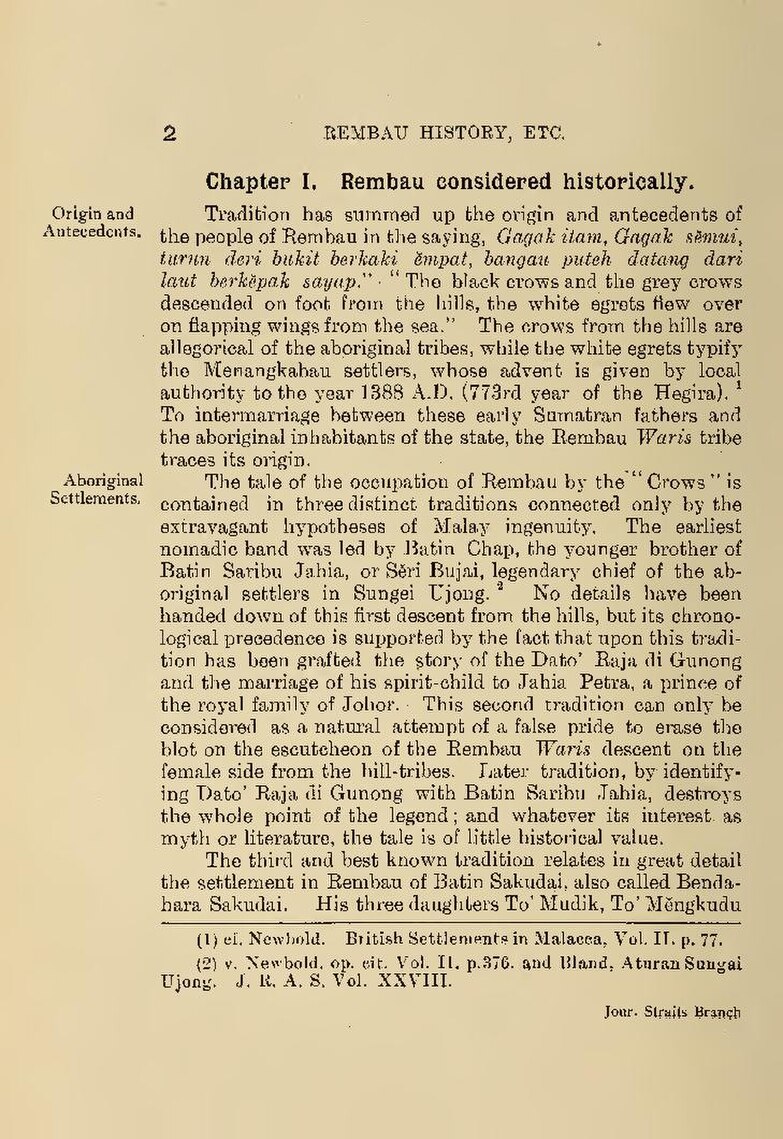Chapter I. Rembau considered historically.
Origin and Antecedents.Tradition has summed up the origin and antecedents of the people of Rembau in the saying, Gagak itam, Gagak semui, turun deri bukit berkaki ĕmpat, bangau puteh datang dari laut berkĕpak sayap.". "The black crows and the grey crows descended on foot from the hills, the white egrets flew over on flapping wings from the sea." The crows from the hills are allegorical of the aboriginal tribes, while the white egrets typify the Menangkabau settlers, whose advent is given by local authority to the year 1388 A.D. (773rd year of the Hegira).[1] To intermarriage between these early Sumatran fathers and the aboriginal inhabitants of the state, the Rembau Waris tribe traces its origin.
Aboriginal Settlements.The tale of the occupation of Rembau by the "Crows" is contained in three distinct traditions connected only by the extravagant hypotheses of Malay ingenuity. The earliest nomadic band was led by Batin Chap, the younger brother of Batin Saribu Jahia, or Sĕri Bujai, legendary chief of the ab- original settlers in Sungei Ujong.[2] No details have been handed down of this first descent from the hills, but its chrono- logical precedence is supported by the fact that upon this tradi- tion has been grafted the story of the Dato' Raja di Gunong and the marriage of his spirit-child to Jahia Petra, a prince of the royal family of Johor. This second tradition can only be considered as a natural attempt of a false pride to erase the blot on the escutcheon of the Rembau Waris descent on the female side from the hill-tribes. Later tradition, by identify. ing Dato' Raja di Gunong with Batin Saribu Jahia, destroys the whole point of the legend; and whatever its interest as myth or literature, the tale is of little historical value.
The third and best known tradition relates in great detail the settlement in Rembau of Batin Sakudai, also called Benda- hara Sakudai. His three daughters To' Mudik, To' Mĕngkudu
